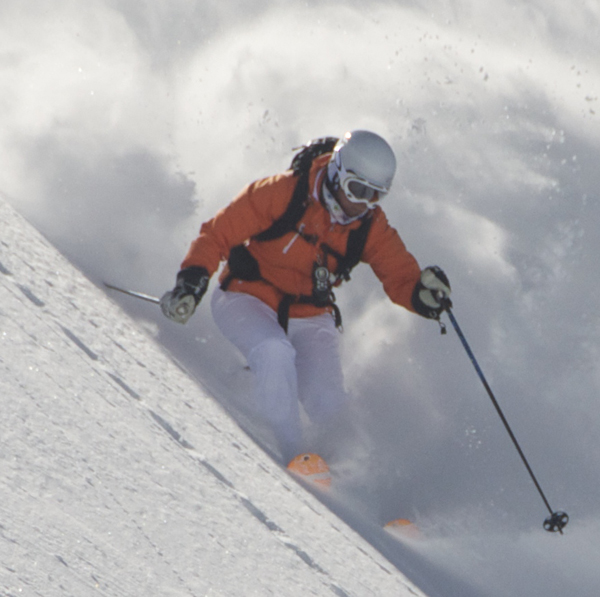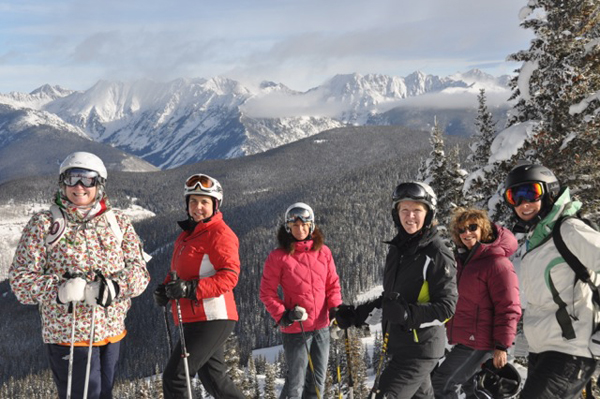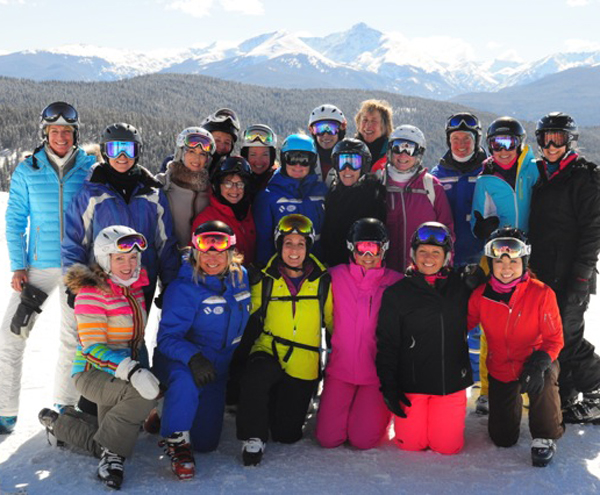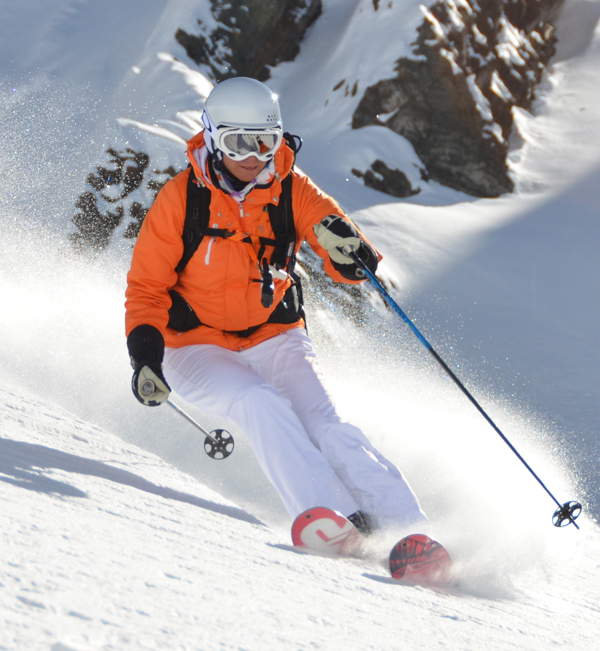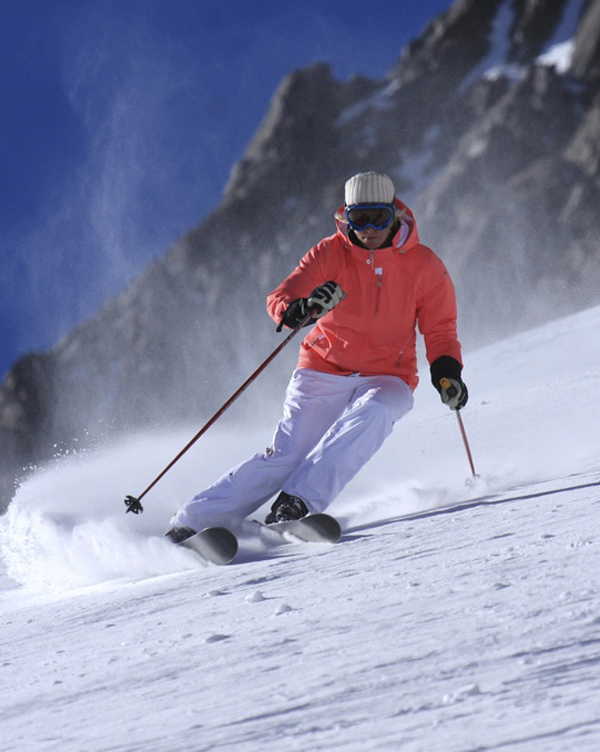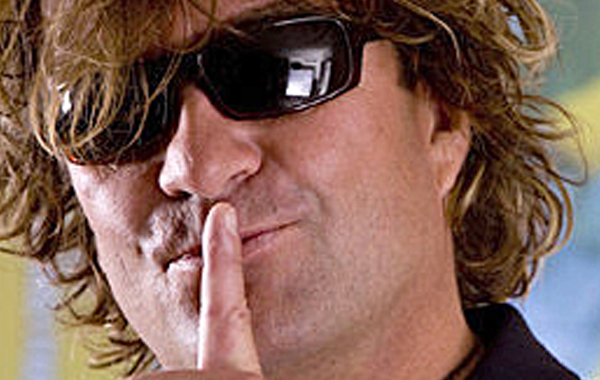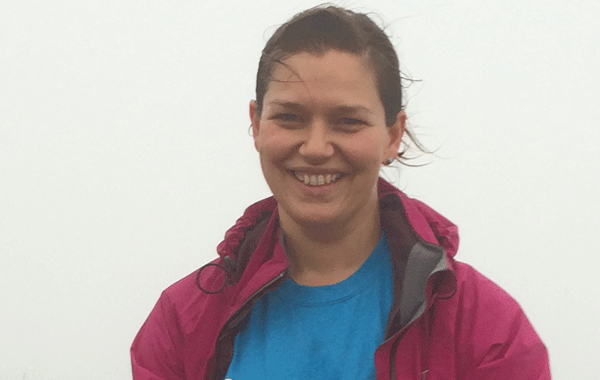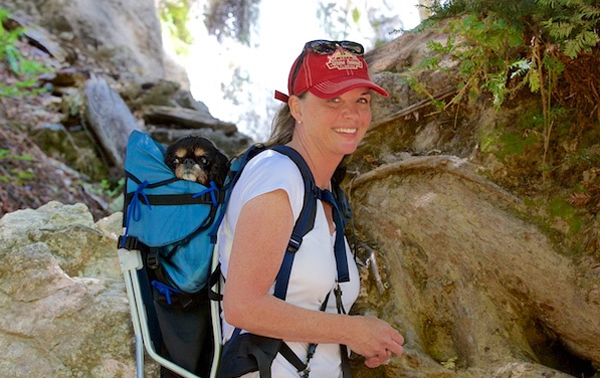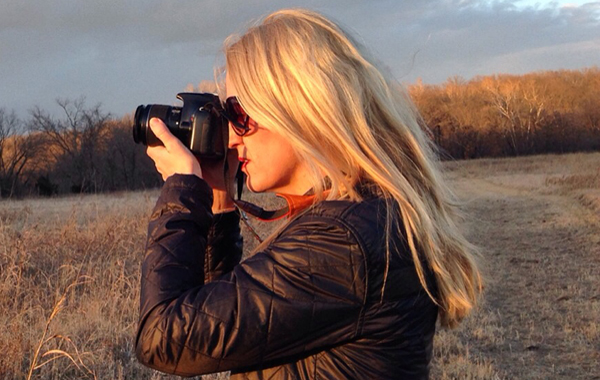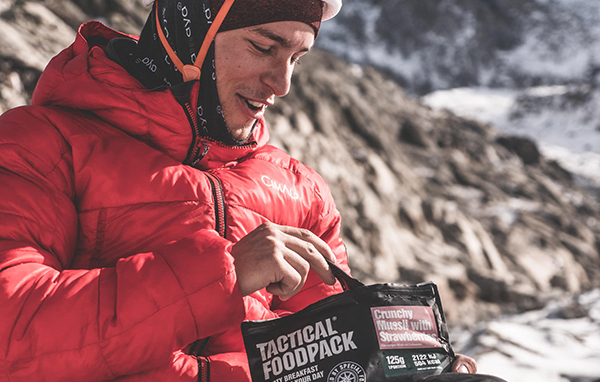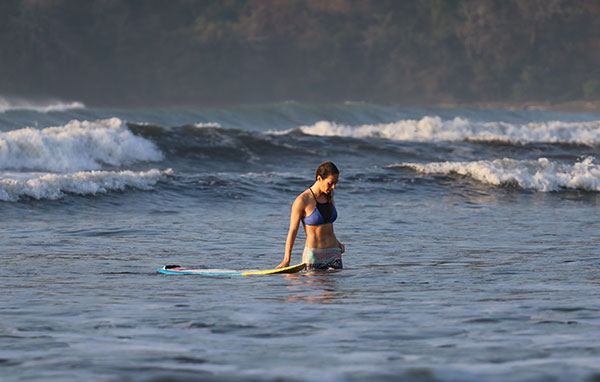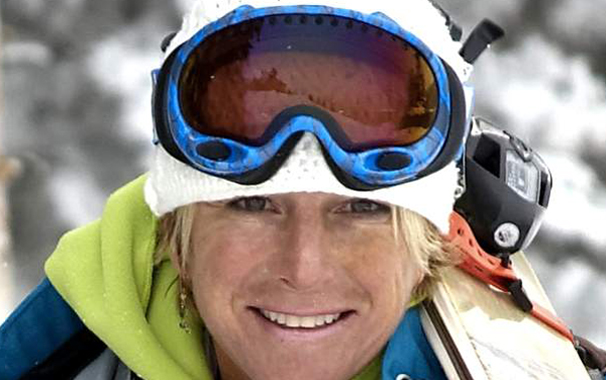
KIM REICHHELM is a former member of the US Ski Team and two-time NCAA All American for Univ. of CO. She has been hosting ski adventures around the world for over 24 years.
Having been brought up in a competitive family it was at the age of three that Kim started skiing and she went on to race professionally for 16 years. She has been featured prominently on American television with interviews on programmes such as Late Night with David Letterman and Good Morning America. Her personable character and knowledge of sport have also seen her work in a journalistic capacity for ESPN and Fox Sports and she has also hosted programmes for RSN and Outdoor Life.
With a passion to help educate women on the slopes it was in 1989 that Kim founded Women’s Ski Adventures which is designed for women of all skiing abilities and continues to offer opportunities to women around the world. She later went on to start up Steep Skiing Camps which helps families enjoy what the sport that she has dedicated a lifetime too.
To find out more about Kim and how you can benefit from one of her organisations visit www.skiwithkim.com.
You started skiing at an extremely young age. Who were your influences and how did where you live enable you to gain so much experience in the sport?
I grew up back east in a very competitive family. With two brothers, a tomboy mum and a chauvinistic dad, I had to charge hard to keep up. Being wimpy or whiny in any way did not fly. Everything in my household was a contest including time on the trampoline, the diving board, swimming, sailing, horseback riding, fishing, even pumpkin carving and egg dying was a competition.
I was not a good student and struggled in school but I ruled the playground and my confidence came from my athleticism.
When I was three my family started skiing and I took to the sport right away. I loved the independence and freedom skiing provided and the rush of adrenalin from being on the edge of control.
At Stratton Mountain Vermont in the ’60s the ski racers were the best skiers on the mountain. I remember riding up the lift and seeing them run gates. I wanted to be a ski racer because in my mind they were the coolest skiers on the mountain.
I started ski racing when I was five. I dragged my entire family into ski racing and my parents were involved in starting Stratton Mountain School. I’ve been skiing over 100 days a year since I was 12. My influences were my parents, my brothers and the best athletes wherever I was.
You raced for 16 years which included competing for the US. What were some of your biggest successes and highlights from this period?
When I was 13 I raced in the Vermont States Championships and won five of five races beating all the girls and all the boys.
I made the US Ski Team when I was 15 and had many great results.
My mum just sent me a box of trophies from when I was a ski racer but honestly I’ve forgotten most of my podiums. I remember the experiences way more then the results.
The disappointments, let-downs and mistakes actually created the greatest learning experiences and shaped me into the person I am today.
You’ve been interviewed on several popular television shows and also worked as a reporter for ESPN. How do you find life in front of the camera and what have some of your fondest memories of TV work been?
When I was in college at the University of Colorado I knew I was going to ski race professionally as soon as I graduated. I focused a lot of my studies on marketing, promotions, and public relations in the ski industry and even took an acting class at a Denver talent agency. I wanted to have good camera presence hoping I would make the broadcast even if I didn’t win. So right from the start I was very comfortable in front of the camera.
Once I retired from ski racing and started working for Bud Sports on the broadcast team I was totally in my element. I really enjoyed finding ways to make the contest and the athletes interesting to the viewer. I would ask myself, what is it that makes these people real? I would ask the questions that would make the athletes tell the viewer more than what they could see. I would gather information before the contest that would provide to the audience a deeper knowledge. I continued this when I worked for X Games and on broadcasts for Big Mountain Skiing, which made the work challenging and rewarding.
Being interviewed was really fun because I got to tell my story. One of my favourites was when I told Good Morning America\ I couldn’t go on the show because I was doing a job for ESPN in Breckenridge and the show was airing live in Aspen that day. I gave them name of some other women whom I thought would do the job well. But they wouldn’t take no for an answer and ended up sending a helicopter for me so I would be back in Breck to start my job at 9am.
It made me feel pretty special. Of Course being on Late Night with David Letterman was pretty cool too. George Carlin and Timothy Hutton were on before me and Letterman kept asking them if they had met me. I was really flattered he was so stoked to have me on the show.
In 1989 you founded Women’s Ski Adventures. Could you tell us more about the organisation and how it has helped thousands of women around the world to have more fun with the sport and also to improve their confidence?
In the ’80s I had many experiences seeing how men and women learned differently and how they dealt with intimidation and fear. Being a tomboy and a pro-athlete I too was intimidating to women but I didn’t want this to be the case. I started reaching out to women and helping them build confidence and overcome their fear. I found that by taking the men out of the equation then women became more engaged in the learning process. I also found it incredibly rewarding to give back to both women and the sport I loved.
My goal when I started Women’s Ski Adventures (WSA) was to make skiing more fun for women, to eliminate all the hurdles that made women shy away from skiing, to build their confidence in a supportive environment and through knowledge make skiing a sport that they loved and would participate in for the rest of their lives.
My mission statement has not changed in over 25 years and I still get so much pleasure from hosting these ski clinics.
You later created a programme which has gone on to become called Steep Skiing Camps. Could you tell us more about that and where the inspiration for it came from?
After competing in and winning the first World Extreme Skiing Championships in 1991 I decided it would be fun to pass on some of this knowledge to recreational skiers. Many of my WSA clients would say to me: “I want you to ski with my husband, or I want you to organise a trip for my family.” I was already starting to organise heli-ski trips and I knew that many of my clients needed to push their skiing to the next level in order to be safe on these types of trips.
Steep Skiing Camps are for skiers that want to learn how to ski the entire mountain including some of the most challenging. Learning to negotiate chutes, powder, crud, tight trees and variable conditions takes time and practice. My guided trips include Chile, Japan, Alaska, Iceland and I need to know that my guests are prepared to take on these challenges.
Steep Skiing Camps provides the perfect progression from resort skiing to adventure skiing.
How often do you currently ski and is it on a usually in a teaching capacity that you now find yourself on the slopes?
I ski up to 200 days a year. In addition to ‘Ski With Kim’ I work for K2 skis helping design the women’s collection. My team and I meet with K2 engineers several times a year developing the best women’s specific products we can.
In addition to skis we make boots, helmets, goggles, poles and back country ski gear.
I really enjoy this job and find working for K2 extremely rewarding. The people I work with are young, fun, hip and passionate about skiing. On top of that they never forget about having a good time.
Most of my days on the hill are working. There are very few days in ski boots where I’m not guiding. When I’m not skiing I’m packing, doing laundry, expense reports, planning travel or travelling.
But the truth is I don’t really teach skiing that much. I hire ski instructors and other ski pros to do the teaching. They have the inside knowledge at their home resort and are trained professionals. I’m the big picture coach and focus my energy on teaching the tricks that a life of skiing has taught me.
In Alta at my Steep Camp I hire Alta ski patrollers to help me guide. This makes for a unique experience and creates the type of camp not offered by anyone else.
I’ve been told that I’m a really good ski teacher. But I think this is because I look at skiing differently than a ski instructor. I try not to get caught up on the words and over analysing the technique. I focus on positive reinforcement, repetition, building confidence and more skiing than talking.
I also take a lot of photos and shoot video. Every day after skiing my groups go over their images with myself or another pro to help them understand the technical mistakes they are making and how to correct them. The desire to improve must come from within, seeing yourself is one of the best ways to accomplish this.
Of all the places you’ve skied around the world which mountains have brought you most enjoyment?
That’s a hard question to answer. I’m in Iceland right now and we’ve been crushing it. The snow is perfect and we’re skiing as late as 8:30pm at night.
Japan this season was also a real treat, but mostly because it was a new experience. I always check places out before I take clients there. Japan was with friends and I wasn’t working which is unique. Any trip that involves a helicopter brings me the most enjoyment.
Alaska is my favorite. My first trip to AK was in 1991 and I have never missed a season since. The friends I have made through skiing in Alaska are lifelong and I cherish those relationships. But more than anything I love the mountains. I heli-ski with both Chugach Powder Guides (CPG) in Girdwood and The Tordrillo Mountain Lodge (TML) in the Alaska range. Both operations are owned and operated by my friends. They are professional and have a high safety standard. I can take my guests to either one of these places and know we will be well taken care of and safe. Of course heli-skiing has its risks but I want to heli-ski for the rest of my life so I’m very choosy about who I ski with. I think my clients appreciate that too.
I like flying in A-Stars, because they only seat four guests. This allows me to organise compatible groups. One week I might have inexperienced heli-skiers who want to ski wide open snow fields that are not that steep but have great snow. The next week I’ll have all expert skiers or snowboarders who want the steepest terrain we can safely get on. Both CPG and TML are great to work with and help me serve up the best heli-ski experience possible. Alaska is in my blood, even when I can’t ski anymore I’ll still spend time there. Did I mention the fishing?
Do you have any exciting plans or challenges for the rest of the year and beyond?
When I finish up in Iceland I have another round of product development for K2 which we’ll do at Mt. Hood in Oregon. After that I’ll return to my home in Baja, Mexico and work on my surfing and kiting. I just started kite surfing a couple of years ago and I’m addicted. It’s so cool to be learning a new sport at my age!
Surfing is the hardest sport I do and since I started surfing at a 35 it’s not natural for me. I love water sports and I love being on the beach in Mexico.
Between surfing and kite surfing, working out for skiing and working on future ski adventures I stay very busy. My house if off the grid and I spend a lot of time alone. I need the solo time because my winters are so hectic. It’s the perfect place to recharge my battery.

